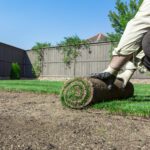Invasive species are nothing new. In a global society, it’s all but inevitable that nonnative species will find their way into new environments. But the damage from allowing invasive species to infest our communities unchecked can be severe.
Between crop damage, loss of native species, and property damage, non-native insects cost local governments $2 billion per year. The same report estimated invasive insects cost a further $1.5 billion in residential property value loss.
One of these species that’s been of concern lately is the spotted Lanternfly. What threats does this encroaching insect pose? To find out, let’s take a look at what these invaders are and the damage they can wreak.
What Is the Spotted Lanternfly?
The spotted lanternfly is about one inch long and half an inch wide and easy to spot thanks to its distinctive wings. When they’re landed only their gray, spotted wings are visible. But when they take flight they expose their eye-catching red and black-spotted wings.
They’re also recognizable by their black head, black legs, and their yellow abdomen with black, bumblebee-like bands.
Native to China, they were first detected in Pennsylvania in 2014. They have since spread to 10 more states including Connecticut, Delaware, Indiana, Maryland, Massachusetts, New Jersey, New York, Ohio, Pennsylvania, Virginia, and West Virginia.
The pest feeds on a wide range of fruit, ornamental, and woody trees. In particular, they pose a threat to orchards, where they can devastate crops.
Even without spotting the flies themselves, you can often find evidence of their work. Oozing sap from wounded trees, a foul, fermented smell, and buildup up honeydew or sooty mold may all be signs of an infestation. In severe cases, you’ll start to notice tree dieback due to long-term damage.
The flies themselves are not long-distance flyers. However, they’re known to “hitchhike” long distances when people carry an egg mass along with them during camping, hiking, or clearing land.
Managing Invasive Species On Your Property
Pests like the spotted lanternfly can pose a threat to plants on your property or local agriculture. As such, any you find should be killed on-sight.
That said, killing an adult will do nothing to prevent a brood from hatching once it’s been laid. So your next step should be to report a suspected infestation to the state.
Besides reporting infestations, there are steps that you can take during your regular garden care to catch outbreaks early.
When preparing for seasonal holidays, take the opportunity to check outdoor items and fixtures for egg clusters. You should also inspect your trees and plants for signs of illness and damage. For some basics on preparing your property and what to check for during the change of the seasons, look here to learn more.
A Rapid Response Is Crucial
When dealing with any invasive species, acting fast to remove the infestation is paramount. And the spotted lanternfly is only one such threat you may find in your garden.
To keep up to date with emerging threat reports, as well as general insight into building a better home and garden, be sure to keep up with all our latest household news and guides.




